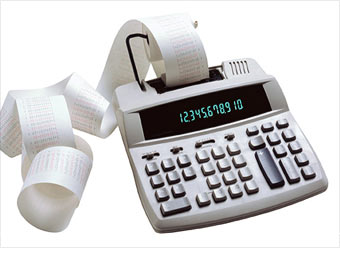
Bring home more cash If you got a refund this year, you lent money to the government interest-free. Better to owe a bit. Adjust your withholding so less of your paycheck goes to the IRS. (Go to irs.gov and search for "withholding calculator" to figure out the right number of exemptions.) Then arrange to have that bump in take-home pay go directly into a money-market fund. That way the interest earned is yours, not the IRS'.
Look up your tax bracket Knowing what you pay on every extra dollar you earn can make you a more tax-savvy investor. After you file, find the tax-rate tables at irs.gov (search for "tax rate" and pick the first result) and see what bracket your taxable income (line 43 of your 1040) puts you in. Armed with that, you can judge whether you're better off investing in tax-free municipal bonds or taxable bonds. To do the math, divide the muni yield by 1 minus your bracket, expressed as a decimal (or 0.72 if you're in the 28% bracket). The recent triple-A-rated five-year muni yield of 3.1%, for example, is the same as earning a taxable 4.3% if you're in the 28% bracket. Compared with five-year Treasury yields of 2.9%, it's a clear winner.
This info can also help you decide between a traditional 401(k) and a Roth 401(k). That call in part comes down to a guess as to whether you'll be in a higher bracket now or in retirement. Because you pay taxes up front in exchange for tax-free withdrawals, a Roth is most attractive if you expect your tax rate to go up.
Plan for the AMT Get trapped by the AMT this year? A tax pro may be able to help you avoid it, at least every other year. AMT-fighting strategies include shifting income and deductions from one year to another (say, if you run a business) and exercising incentive stock options gradually. For a preview of what's possible, see the 2007 AMT Assistant at irs.gov.
More galleries
Last updated April 11 2008: 9:07 AM ET
